Nudge-nudge, drink-drink: How F1 became a battleground against boozy drivers
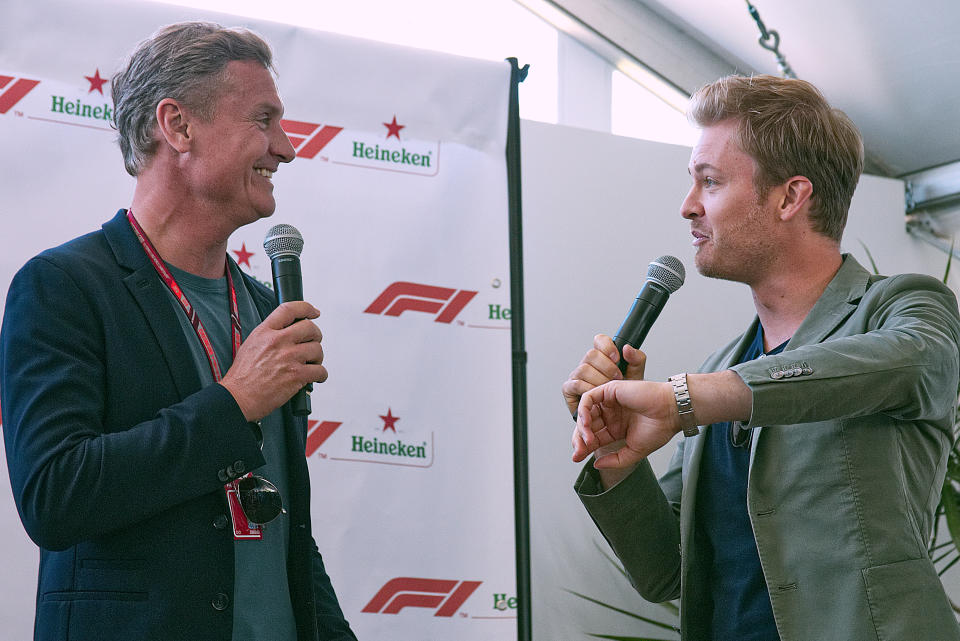
I was nudged twice in a bar last week. The first time, half my booze ended up on the floor. The second time, I was left with no alcohol at all.
Thing is, the second time it was Nico Rosberg who nudged me … and I paid for the privilege.
Nico’s nudge wasn’t physical. Rather, it was a marketing technique, made famous a decade ago by authors Richard Thaler and Cass Sunstein in their book, entitled (drum roll) Nudge.
But what has nudging got to do with Nico and Formula 1? Rather a lot, as it happens.
Why are drinks companies selling us sobriety?
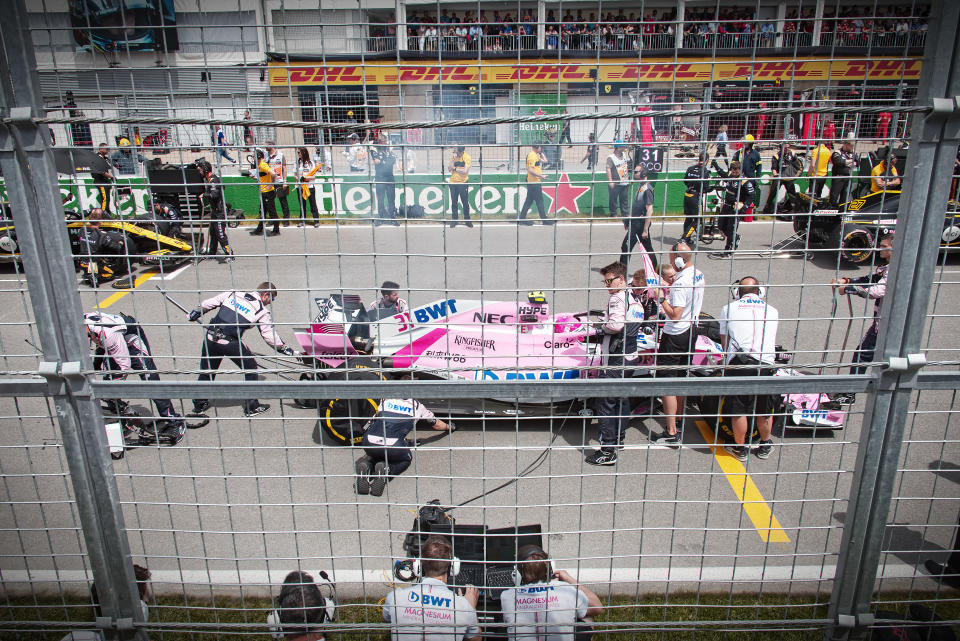
There’s always been alcohol around F1, from the champagne presented to Juan Manuel Fangio after his 1950 victory in the inaugural French F1 Grand Prix (it took place in the champagne ‘capital’, Reims) to those iconic Martini stripes that first appeared on a Formula 1 car in 1972 and could make your granny’s Micra look sexy.
In 2008, tobacco was all but kicked out of the sport as health concerns finally trumped cash concerns (tobacco behemoth Philip Morris still has a huge deal with Ferrari but that’s another story in itself) so the focus of F1 health campaigners turned to alcohol.
That whole linking of drinking and driving is more than a little awks in a sport which is forever preaching about safety standards and, as a result, drinks companies have had to be a little clever.
For example, when Johnnie Walker signed up as F1’s ‘official whisky’ in 2014, it made a big effort to explain that the sponsorship would help expand the company’s ‘Join the pact’ anti-drink driving campaign.
Which brings us to Heineken, the Dutch beer monster currently in the middle of a five-year global sponsor deal which is worth … well, pick a number between £150million and £350million, because Heineken isn’t saying or, possibly, doesn’t know exactly how much such a huge deal will cost in reality.
Buy more beer, drink less alcohol
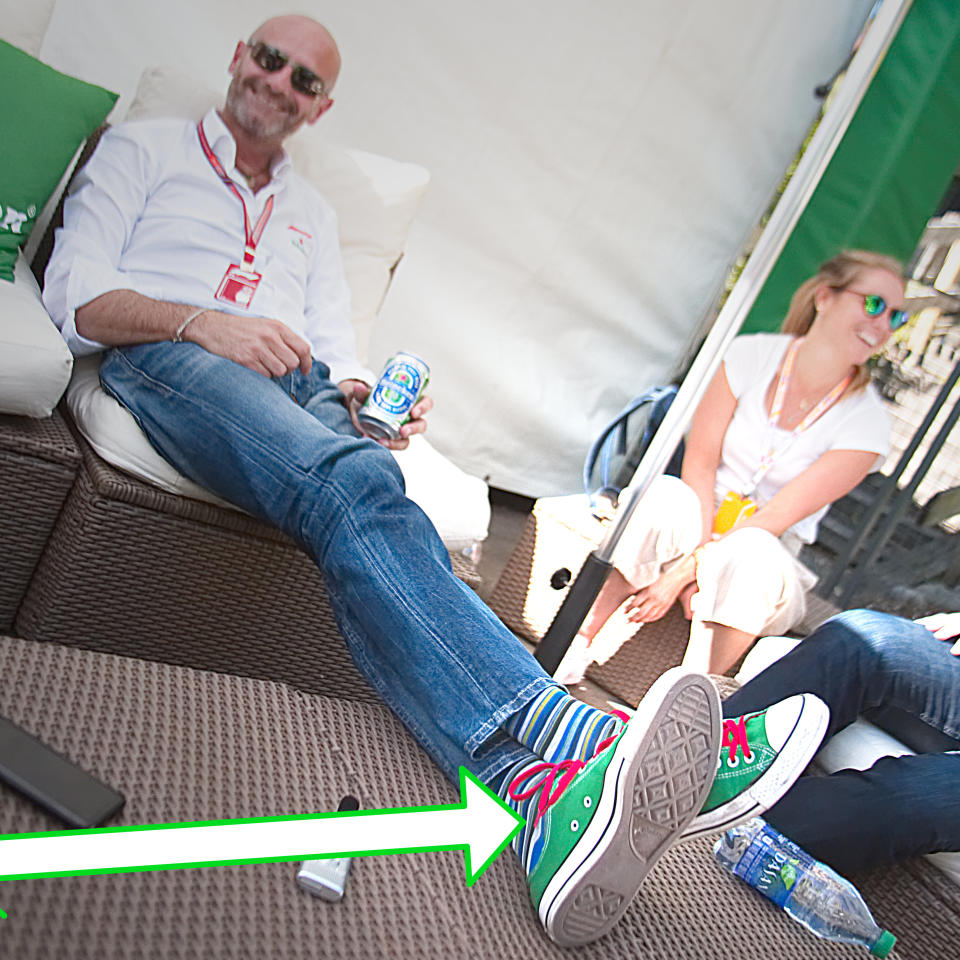
Heineken’s foray into F1 comes at a time of huge flux in the beer market – drinking habits are changing, craft beers are making a dent (before they are themselves bought up by brewing giants) and low/zero alcohol drinks are now a force to be reckoned with. In Spain, one-in-ten beers sold is alcohol free – and tastes a whole lot better than a watery diet cola when you’re the designated driver.
So, while Heineken can quite legitimately say it wants to push alcohol-free beer through F1 sponsorship for altruistic reasons (global brand director Gianluca Di Tondo told me: ‘We believe it is part of our responsibility as a brand…’) don’t for one moment think that’s all there is to it.
Research shows F1 fans (of a particular vintage) have remarkable recall of tobacco brands that graced cars many, many moons ago – think Lucky Strike, Gitanes and John Player as much as Marlboro and B&H.
The Heineken logo is absolutely everywhere at some races and, whether that’s to promote the company’s ‘0.0’ alcohol-free beer or its regular lager, the name will stick in our minds.
Now we’ve got that disclaimer out of the way, it’s fair to say Heineken is doing some genuinely interesting stuff around drinking and driving, and tying it in closely with its F1 sponsorship.
Liquid laboratories in Manchester pubs slash drink-driving by half
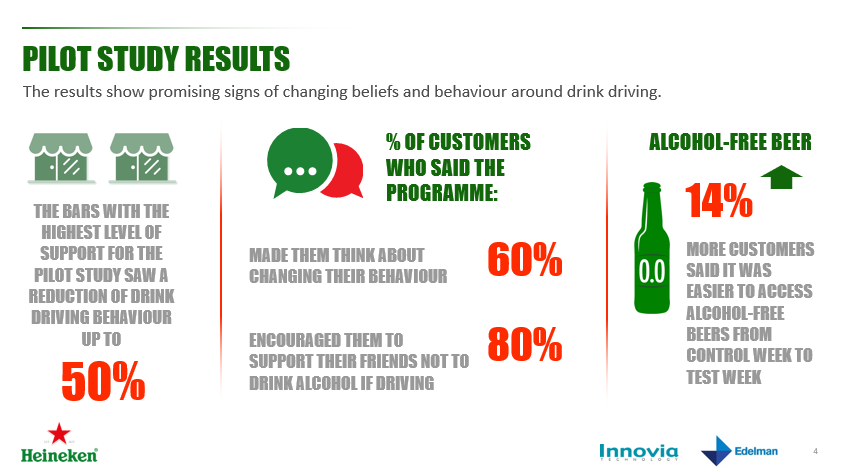
In 2016, Heineken announced its F1 partnership with a focus on the message ‘When You Drive, Never Drink’; last year, it unveiled its alcohol-free beer at the Spanish Grand Prix; this year’s big event was a major study into drink-driving.
The results of that study are quite striking: they suggest that simple interventions – or nudges, to use that word again – can cut drink-driving behaviour by up to half.
The pilot study was launched in Manchester and Reading – Britain is seen as a particularly challenging market in which to address drink-driving – where ten bars (gastro-pubs to local boozers) were equipped with 20 nudges, prompts and reminders to help people stay off the sauce completely when driving.
The project was led by Dr Helena Rubinstein, of behavioural change consultancy Innovia Technology.
She told me: ‘Some findings were particularly fascinating. We asked people to take a pledge that they wouldn’t drink and drive and we had some concerns that people would just sigh and say “I’m not doing that”. But we had 150 pledges, which doesn’t sound like a huge amount but was actually massive compared with other studies of this kind, where getting six people to sign up was considered to be doing well.
‘You want people to have easy access to non-alcoholic drinks. And we used motivational interviewing techniques to train bar staff to offer deals such as free nachos to drivers if they signed a commitment card – 95 per cent of people stuck to the pledge.’
The proof of the pudding is in the drinking

This study was a proof-of-concept but the results are so encouraging that a broader piece of research is now a possibility.
Dr Rubinstein added: ‘The bar owners were really supportive – four of the ten bar owners are going to carry on doing this.
‘We have every reason to believe this programme is acceptable, feasible and has a real potential to make a change. It’s just in the UK and we’d like to see what would need to change if you take this to Holland, what would you do in the US, what happens if you go to China.’
One of the challenges was to design interventions that didn’t make people feel they were being told off.
‘We really didn’t want to be finger-wagging,’ said Dr Rubinstein. ‘You can tell people all you like not to drink and drive, not to smoke, to exercise more, and it doesn’t work – so don’t do it.’
A pilot study of 700 people using warning signs at establishments in Manchester and Reading, from gastro-pubs to ordinary bars, found a 50% drop.
Rosberg: ‘Don’t compromise on drink-driving’
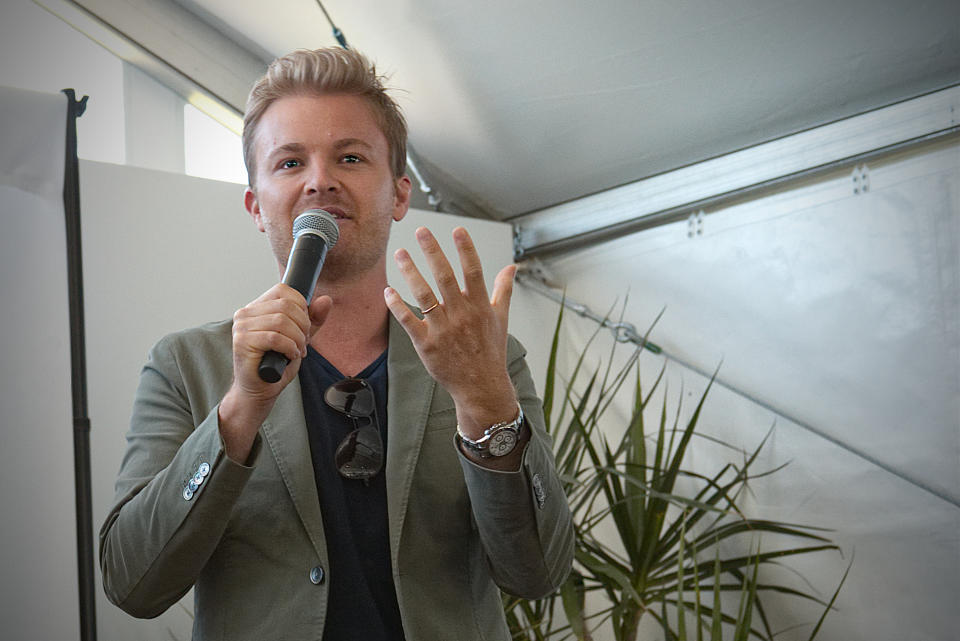
All Heineken’s F1 brand ambassadors are involved in this work, including Sir Jackie Stewart, David Coulthard and Nico Rosberg.
Nico told me: ‘Road safety is something I’ve been very passionate about in recent years. There’s no better way to get the message out than to partner with an amazing brand like Heineken, which reaches millions of people around the world.’
One of the findings from the research project was how big a role peer pressure plays in drink-driving.
Nico said: ‘In a bar, there’s peer pressure; actually, it’s beer pressure. Don’t compromise! That’s why I’m in this campaign, because I don’t compromise.
‘No compromise is how I won the world championship, I dedicated my life to winning the world championship.
‘It would be really nice to influence behaviour with this campaign and save a life.’

 Yahoo Sport
Yahoo Sport 






































